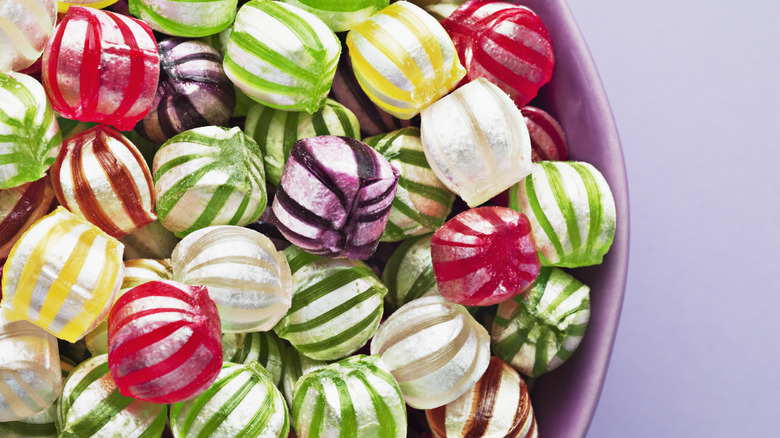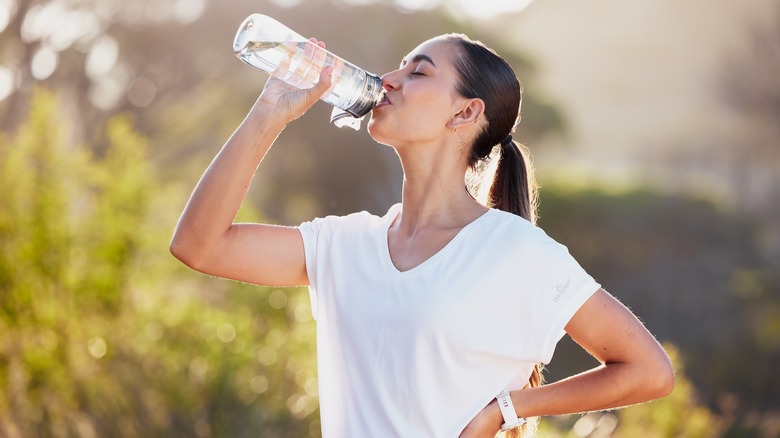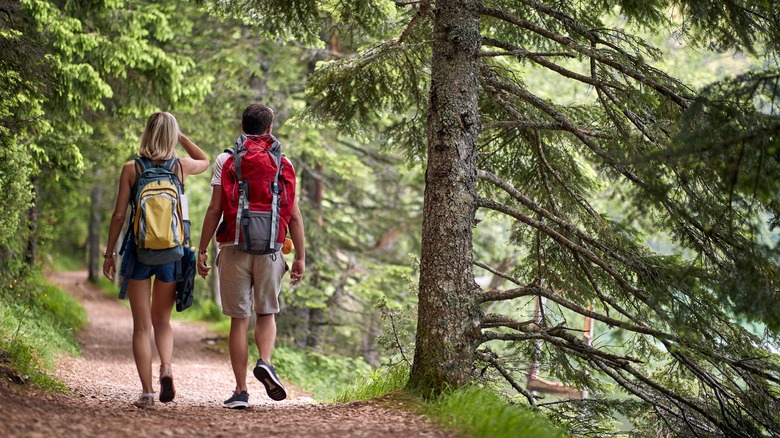Travel Guides Outdoor Adventures Hiking
Maddie Brown
Long-distance hiking can elevate your experience of the outdoors. There’s nothing more peaceful than being surrounded by stunning scenery. The physical activity also releases endorphins, which are crucial for a healthy mind and body. However, it’s important to plan ahead so that your trek goes smoothly. When packing for a hike, you’ll probably remember to bring essential supplies, like a water bottle, sunscreen, and a first aid kit. But there’s another item you should think about bringing that’s not quite as common.
Imagine the scene: You’re climbing up steep hills as the sun beats down on you, making you increasingly sweaty and thirsty. Sips of water help you stay hydrated on your hike, but you’re craving just a little something extra to lift your morale. Well, hard candy may do the trick. From peppermints to root beer barrels, there are a plethora of flavorful options to choose from. Besides the delicious taste, are there other reasons you should bring hard candy on a hike?
Hard candy can help with dry mouth

Martin Barraud/Getty Images
If you’re suffering from dry mouth while hiking, suck on a hard candy. The treat can help activate your salivary glands and add some moisture to your mouth. Sour candies can do wonders for increasing saliva flow. In addition, the sweet taste of candy can simply give you a nice boost when your climb becomes challenging. To fully savor the goodie, pick a lozenge that’s longer lasting. Jolly Ranchers take longer to dissolve in your mouth, for example. Due to their larger size, Ring Pops will also hold out for a while — plus, you can keep it easily accessible on your finger, giving it an occasional lick while you’re on the trail.
While hard candy is a better choice for hydration, chocolate can be also beneficial for other reasons. Dark chocolate is especially nutritious and packed with antioxidants. Erin Parisi, a mountaineer and outdoor athlete for TranSending.org, told Self, “That banged up Ghirardelli bar in your pack equals instant energy.” Of course, there’s one important caveat: Chocolate bars can easily melt in hot weather. To avoid this, select a bar that has more cocoa solids, as its melting point will be higher. You can also keep your chocolate from softening by putting it in an insulated cooler backpack, bag, or container.
Hard candy shouldn’t be a replacement

PeopleImages.com – Yuri A/Shutterstock
Hard candy can alleviate a dry mouth, but it shouldn’t replace water on a hike. Pack plenty of fluids with you to avoid dehydration. The amount you should drink is correlated to several details like your age, body type, and the distance and intensity of the hike. However, in most cases, it’s recommended to drink one half-liter of water per hour of movement. If the temperature and level of intensity escalates, it may be necessary to drink more.
In addition to sipping water, you should keep your backpack stocked with nutritious, portable snacks. Keeping your energy and blood sugar levels stable is essential as you exert your muscles. A sugar crash is the last thing you want in the middle of a hike. For proper fuel, go for protein-packed snacks that are low in volume and high in nutrients. Trail mix, unsweetened dried fruit, beef jerky, and low-sugar protein bars are great options. Just remember: Hard candy should be an enhancement, not a substitute.

